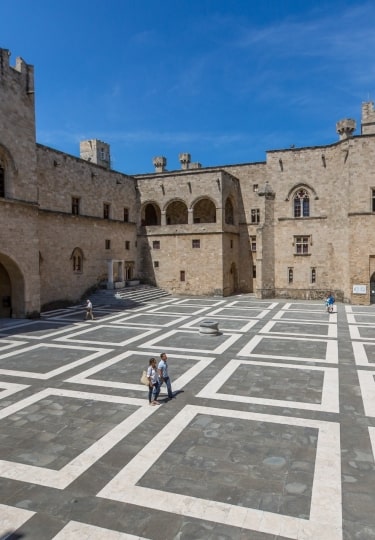In an effort to better defend itself, a number of Greek castles, forts, fortresses, and citadels were built by the ruling powers of the day to fight off potential invaders. Like the country’s ancient ruins, many of these castles proudly stand today, recounting the country’s deep history from yet another perspective.
Many of these castles are open to visitors and as well as providing an insight into the region’s history, reward you with spectacular views of the surrounding coast and countryside.
Here are 17 of the most spectacular castles in Greece.
Palace of the Grand Master, Rhodes
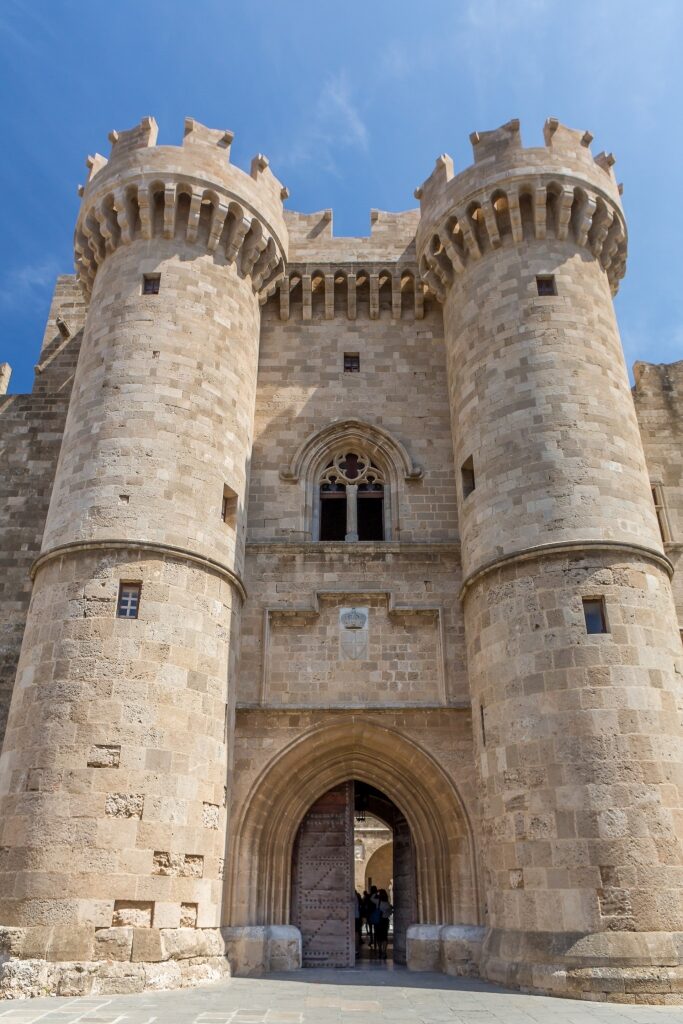
Palace of the Grand Master, Rhodes
One of the few examples of gothic architecture in Greece, this quite magnificent UNESCO World Heritage Site dominates Rhodes Old Town.
Thought to be built on what was an ancient temple to Helios, the sun god, its recorded origins date back to the seventh century as a Byzantine citadel. The occupation of Rhodes by the Knights of St. John crusaders in 1309 saw the castle reach its current form as a fortress and palace of their Grand Master.
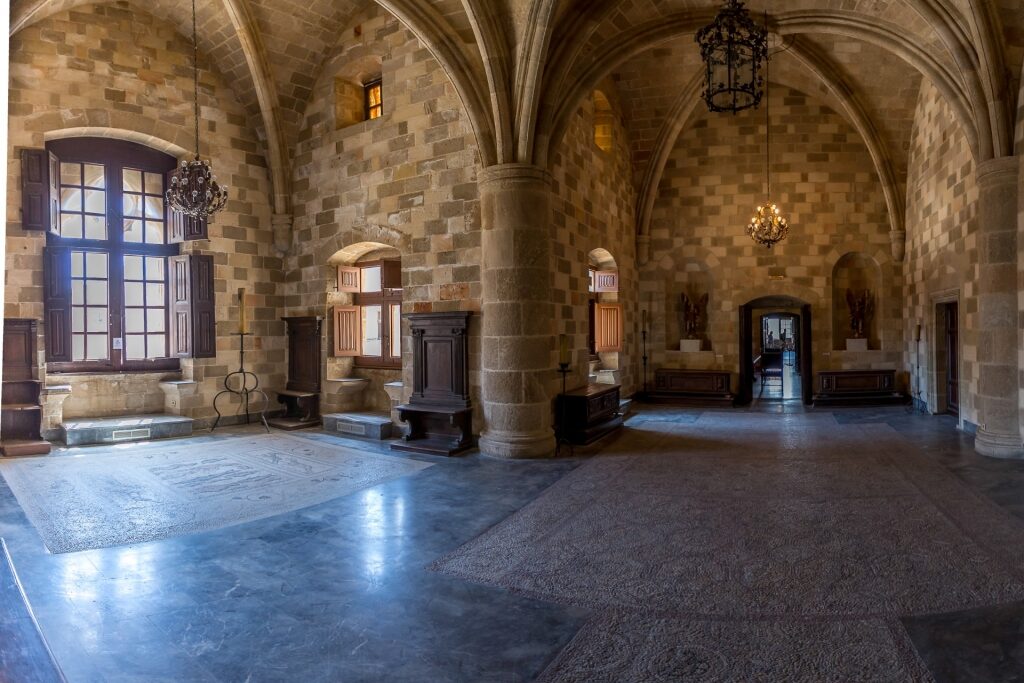
Palace of the Grand Master, Rhodes
The following six centuries saw it employed as a command center during Ottoman rule before it entered Italian hands in World War II, becoming a holiday home, first for the King of Italy, Victor Emmanuel III, and later for dictator Benito Mussolini.
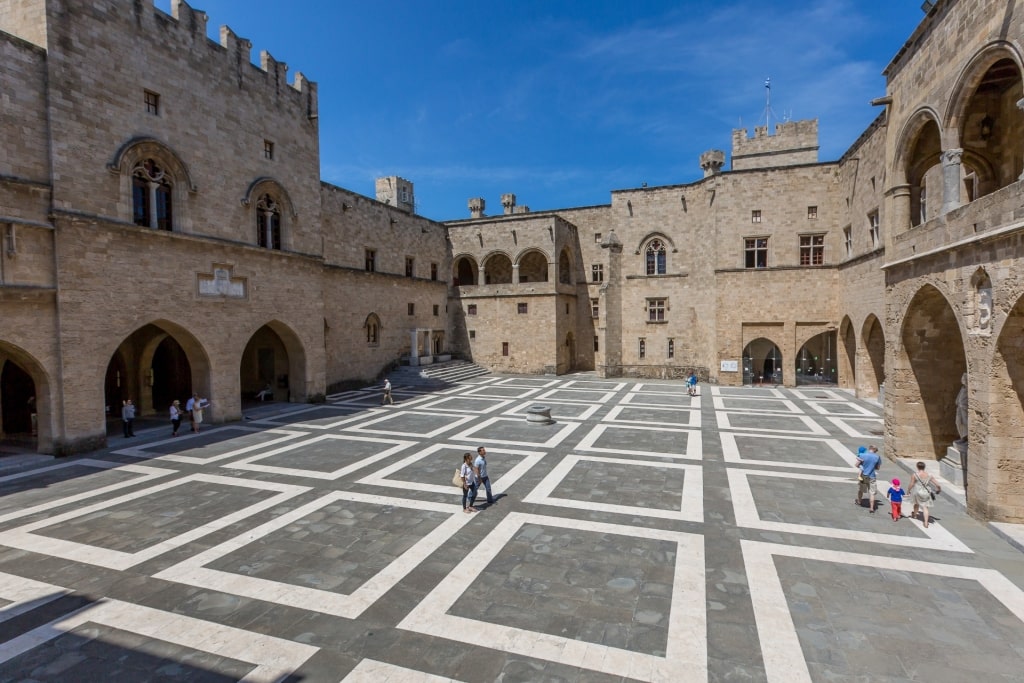
Palace of the Grand Master, Rhodes
Following the post-war passing of the Dodecanese islands back to Greece, the castle was converted to a museum that remains one of Greece’s most visited thanks to its incredible mosaic floors, high wooden ceilings, and statues of the knights.
Koules Fortress, Heraklion, Crete
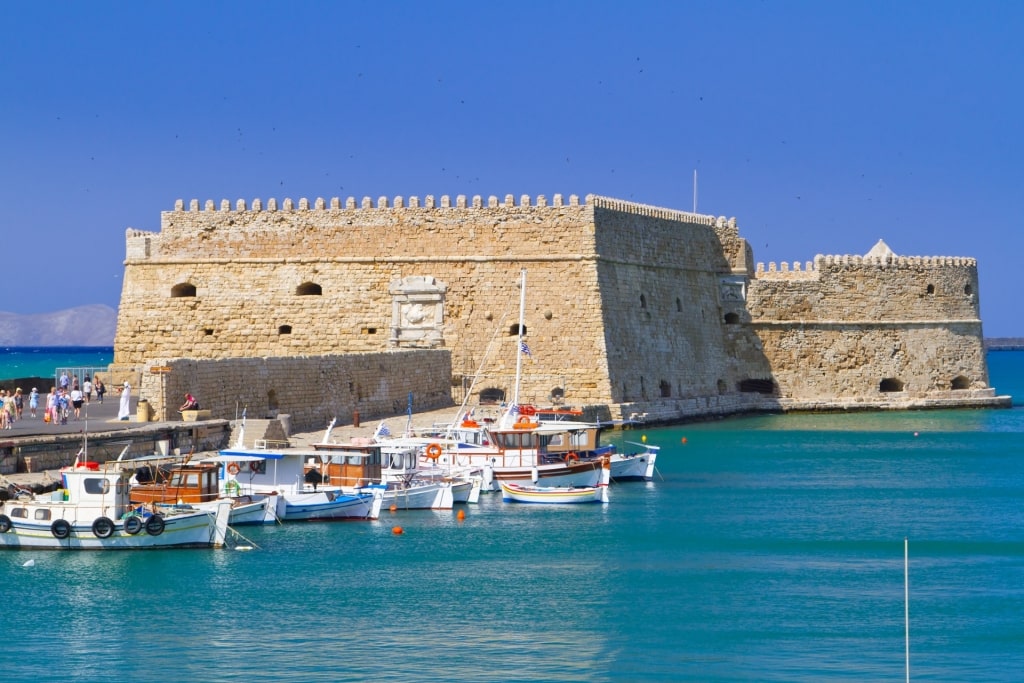
Koules Fortress in Heraklion, Crete
Standing proudly at the harbor entrance to Heraklion is this 16th-century Venetian-era fortress, also known by its Italian name Castello a Mare (fort on the sea).
Set on an artificial island created by the sinking of old ships filled with rocks, the fortress has had several additions and rebuilds over the years.
This is thanks to both natural causes such as earthquakes, and damage during the 21-year Siege of Candia by the Ottomans, who later went on to take the whole of Crete. Now restored, the castle is open to the public and used for exhibitions and other cultural events.
Palamidi Castle, Nafplio, Peloponnese
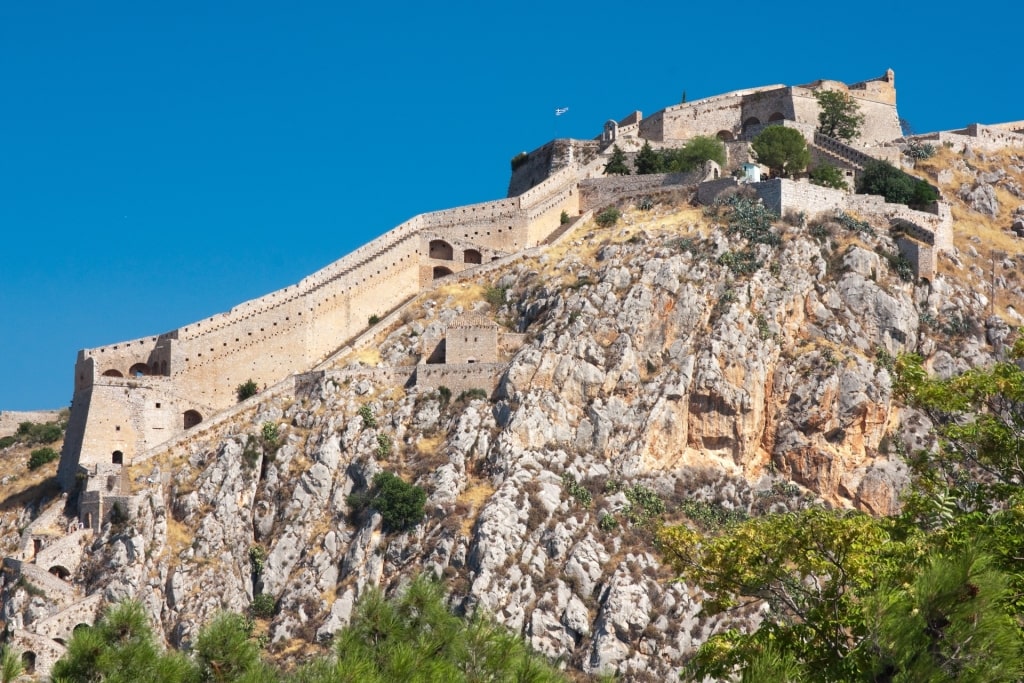
Palamidi Castle in Nafplio, Peloponnese
Like many of Greece’s coastal and island towns, Nafplio has had a succession of different rulers, with the Byzantines, Franks, Venetians, and Turks all laying claim at some point or another.
Architecturally, Venetian rule left the biggest mark thanks to this 17th-century citadel, the last major construction work of the Venetian empire and one of the most impressive castles in Greece.
Set on a hill overlooking the old town, it can be reached via a steep road or a punishing, 999-step hike from the town’s main square.
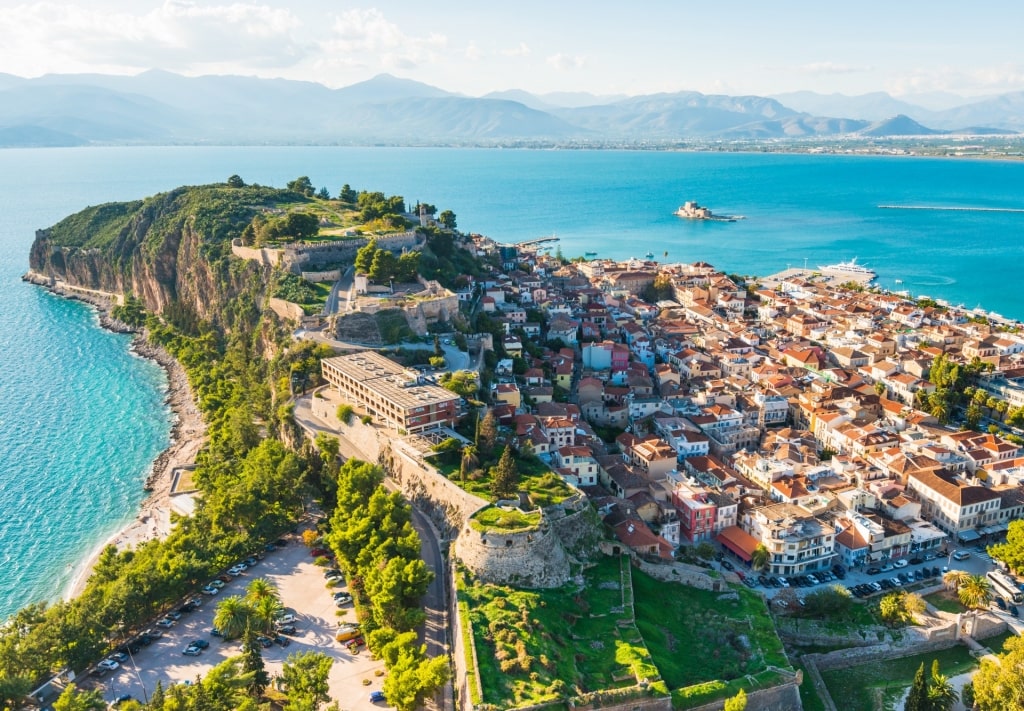
Palamidi Castle in Nafplio, Peloponnese
At the summit, you can enjoy incredible views over the Argolic Gulf and surrounding countryside, making this one of the best things to do in Nafplio.
The Old Fortress, Corfu
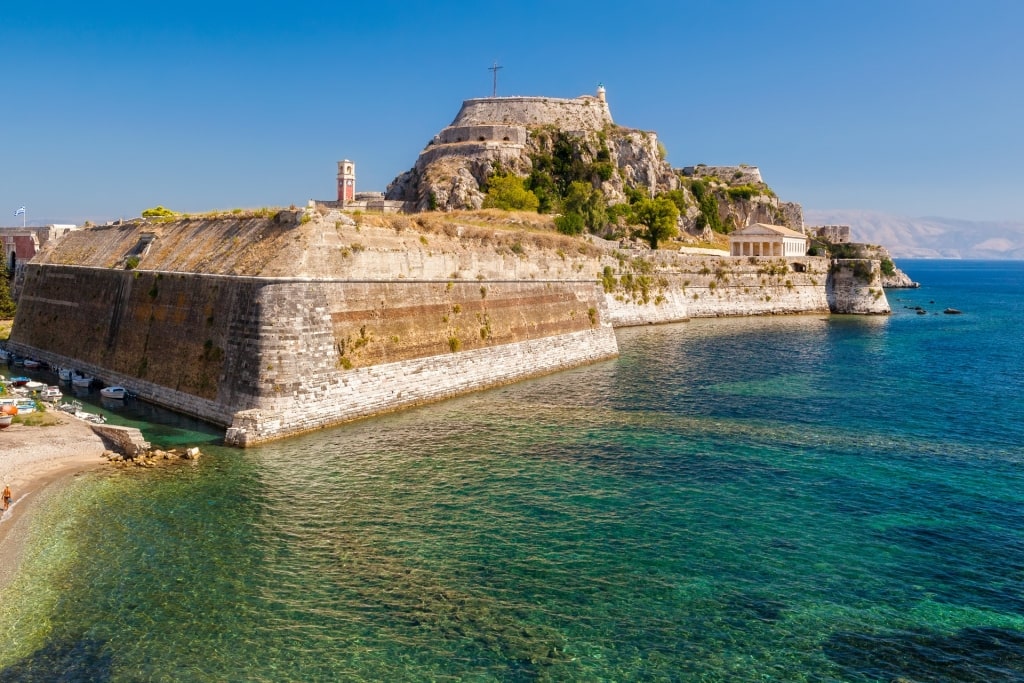
The Old Fortress, Corfu
The quite magnificent Old Town of Corfu is guarded by a pair of fortresses. The Old Fort is the larger of the two, a Venetian-era fortress that sits on an artificial island after a promontory was separated from the town by the digging of the defensive Contrafossa moat.
The fort hosts a number of historically significant buildings, including the Byzantine Collection of the Old Fortress of Corfu (an art museum) and the Old British Hospital.
Its hilltop position also allows for great views toward the mainland to the east, and the rooftops of the Old Town to the west.
The New Fortress, Corfu
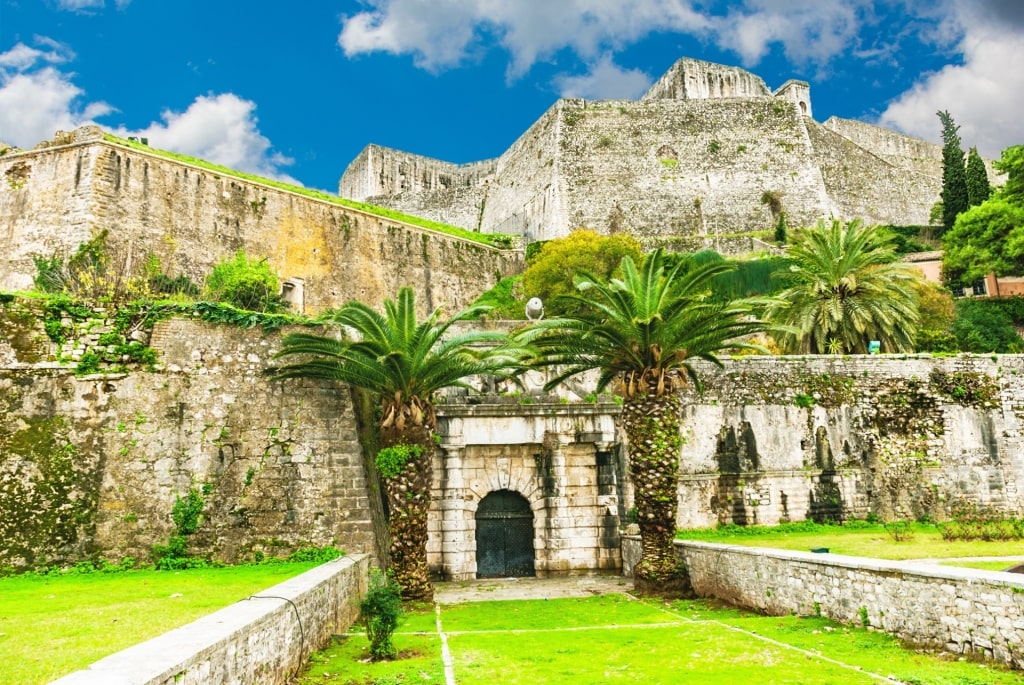
The New Fortress, Corfu
The New Fortress of Corfu Town remains “new” only by comparison to the old one, given that it was built between 1576 and 1645 to further fortify Corfu’s defenses from Ottoman invasion.
The fort sits on top of St. Mark’s Hill and many of its interior structures were additions during 19th-century British rule. Today they include the island’s Museum of Ceramic Art, the Holy Church of the Virgin Mary Spilaiotissa and a number of trendy galleries.
Pyrgos Vasilissis, Athens
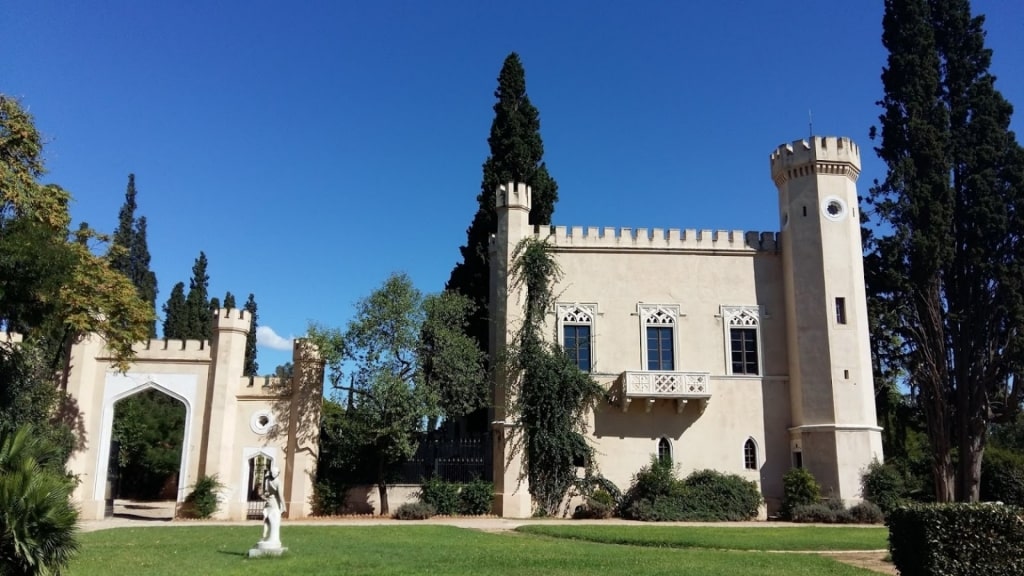
Pyrgos Vasilissis, Athens Photo by EurovisionGR on Wikimedia Commons, licensed under CC BY-SA 4.0
Set in one of Athens’ least remarkable suburbs, Ilion, the fairytale-like Pyrgos Vasilissis (the Queen’s Tower) was the summer home of Amalia, Queen of Greece from 1836 to 1862.
Amalia allegedly bought the land the castle now sits on after falling in love with it while out horseback riding.
After convincing two resident Englishmen who had planted vineyards on the plot to sell her the land, the gothic castle, with its arched windows, polygonal towers, parquet floors and beautiful ceiling art was built.
Now in private hands, it is home to a winery with the owners allowing regular tours and cellar door tastings.
The Fortress of Kavala, Kavala
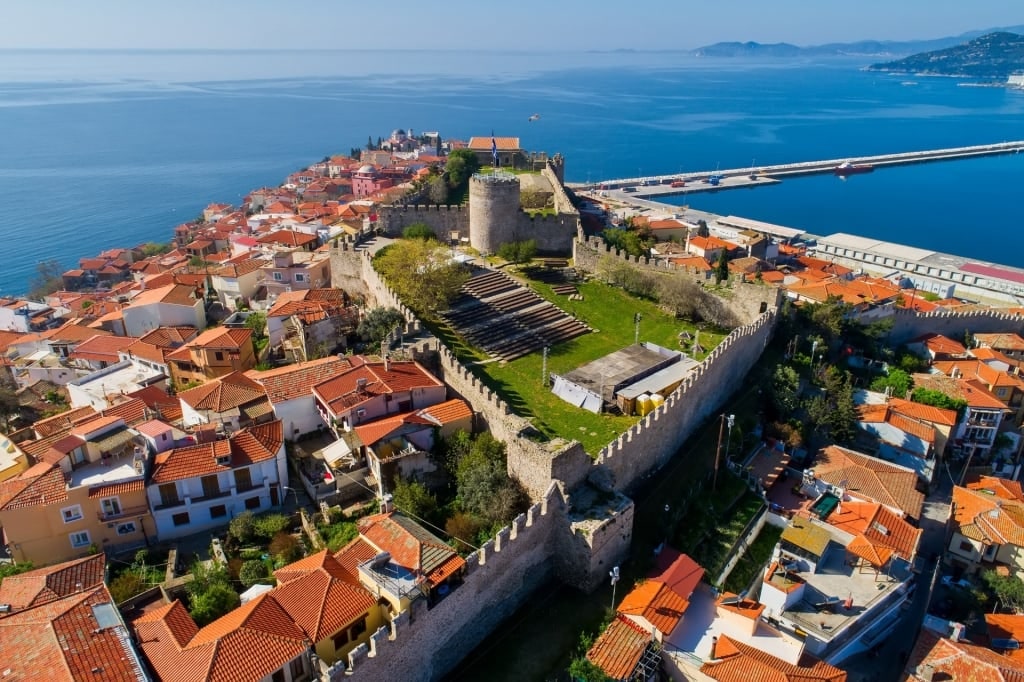
The Fortress of Kavala, Kavala
A 90-minute drive east of Thessaloniki, Kavala is one of Greece’s most underrated cities.
Set on the ancient Roman road Via Egnatia and overlooking the Bay of Kavala toward the island of Thassos, it has, over the years, been both an important seafaring town and the center of Greece’s tobacco industry.
From a tourism point of view, the fine Greek beaches outside of town are a strong draw to the area, as is the fortress which dominates the port area.
Built in the 15th century to help protect the Via Egnatia and approached by a series of winding, cobbled streets, its steep walls house a guardhouse, several towers, an open-air theater, armories and gunpowder stores.
Fortezza of Rethymno, Crete
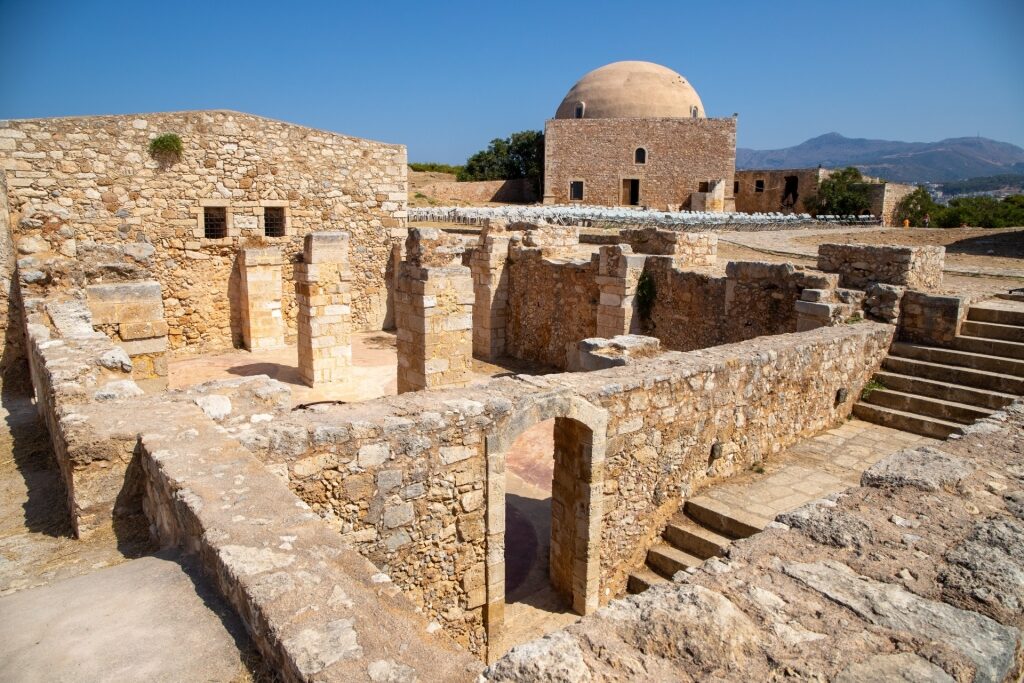
Fortezza of Rethymno, Crete
Sitting on a small hill overlooking Rethymno Town, the Fortezza is another Venetian-era structure designed to help fight off invading armies.
Still the largest and most impressive structure in the town, it is also Rethymno’s number one tourist attraction with much to see including warehouses, an Ottoman-era mosque and the former rector’s residence.
An on-site open-air theater is named after Crete’s most famous tragedy, Erofili, written in 1600 by Georgios Chortatzis.
Read: Fascinating Ancient Greek Ruins to Explore
White Tower, Thessaloniki
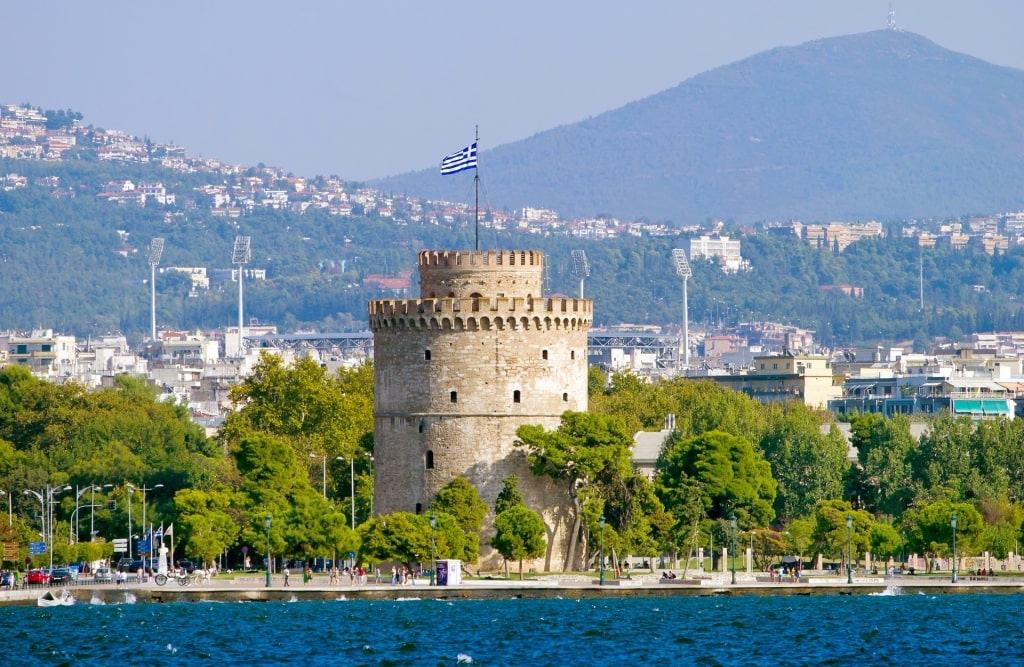
White Tower, Thessaloniki
Ask a local for directions in Greece’s second city and more than likely your instructions will include the city’s most iconic monument, the waterfront White Tower, such is its ubiquitous nature.
Built on top of a 12th-century Byzantine fortress, the 75-foot tall tower now houses an interesting city museum, but the bright exhibits hide a darker past.
During Ottoman rule it was called the Red Tower thanks to the number of grisly executions that are said to have taken place within its walls. The tower was renamed after being whitewashed following Greece’s independence in the early 19th century.
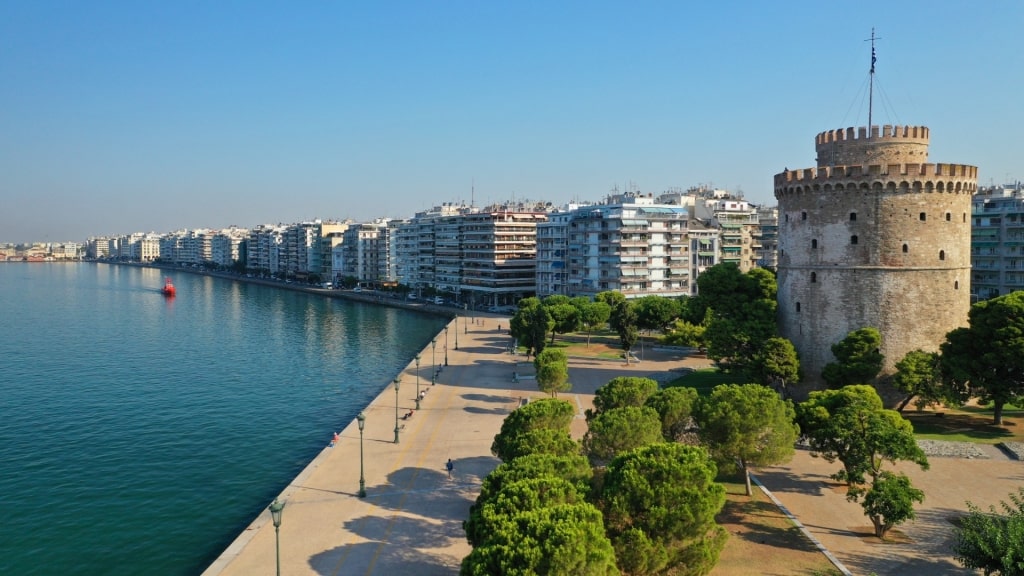
White Tower, Thessaloniki
It’s a relatively steep climb up a winding staircase to both the exhibition space and the rooftop, from where the views over the Thermaic Gulf are outstanding.
Read: Best Beaches in & Around Thessaloniki
Bourtzi, Nafplio, Peloponnese
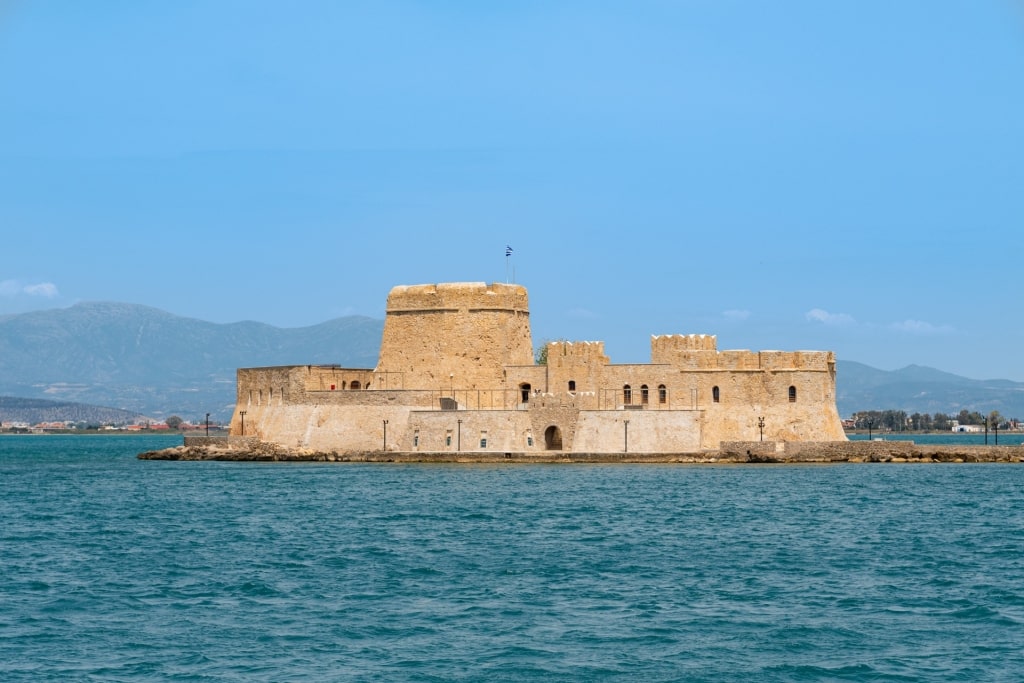
Bourtzi in Nafplio, Peloponnese
While the Palamidi fortress dominates the Nafplio skyline, the town’s second castle, Bourtzi, lords over its waterfront.
Built by Venetians in the 15th century, the impressive fortress sits on a tiny island and was designed as a first line of defense against marauding pirates. Later, during Nafplio’s stint as the first capital of Greece, it served as home to the town’s executioner.
After a spell as a private hotel between 1930 and 1970, it passed back into municipal hands and today can be visited on boat trips from the town or hired out for special occasions such as weddings.
Angelokastro, Corfu
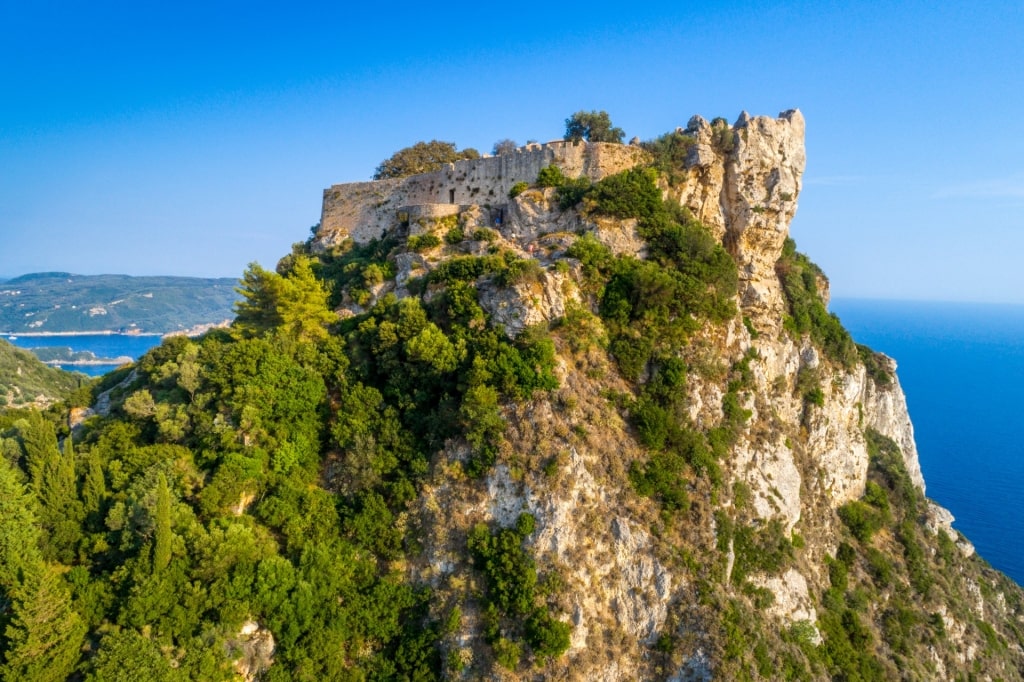
Angelokastro, Corfu
Corfu’s strategic position, natural bounty and immense beauty mean it’s faced a long history of fighting off armed incursions, which is why the island is home to so many fortresses and castles.
Only one of them has managed to never fall to foreign invaders, Angelokastro, a Byzantine-era castle that sits overlooking the Ionian from a precipitous rock formation 1,000 feet above sea level. Little wonder that its name translates as “the castle of the angels”.
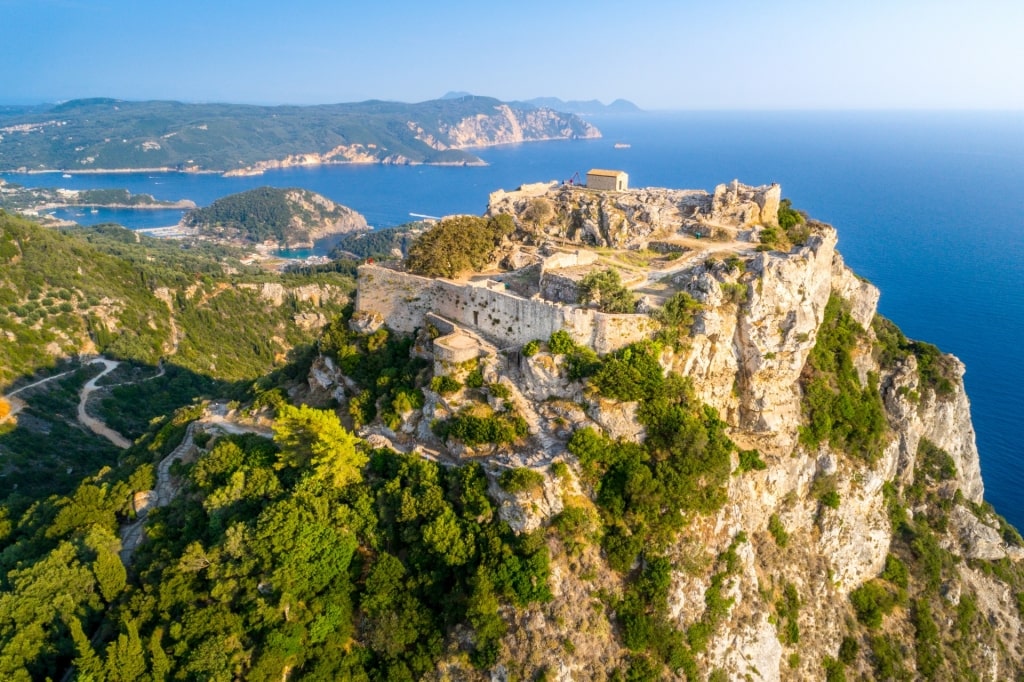
Angelokastro, Corfu
Reached by a vertiginous road with many twists and turns, the castle affords magnificent views over the Old Town to the mountainous mainland and offers incredible sunsets as night begins to fall.
Read: Extraordinary Mountains in Greece
Mystras Castle, Mystras, Peloponnese
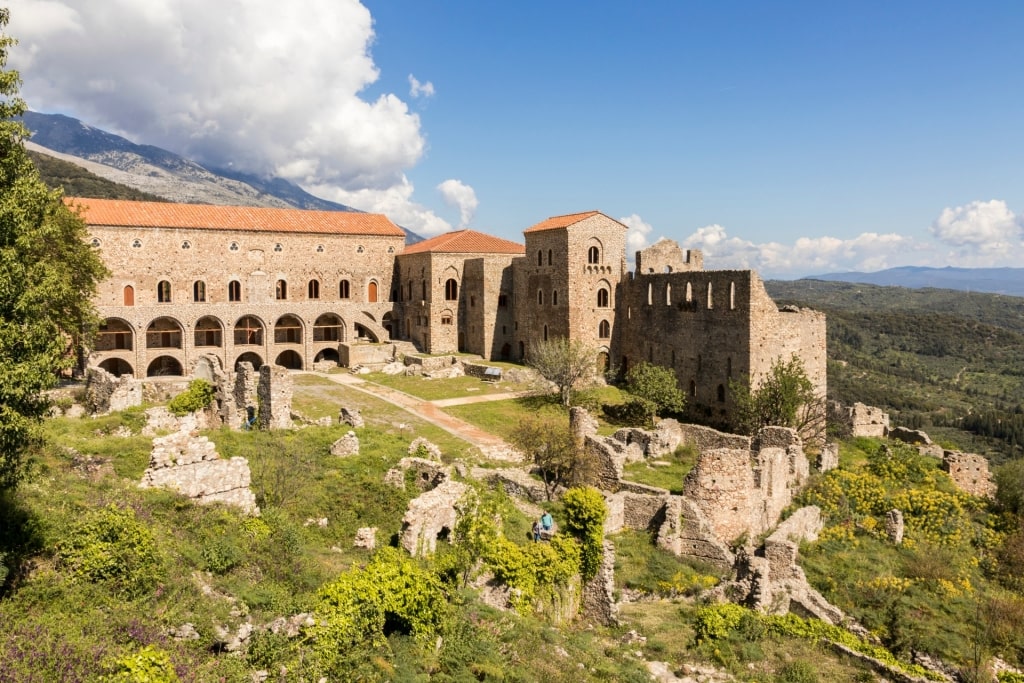
Mystras Castle in Mystras, Peloponnese
Set among olive and orange trees on Mount Taygetos close to ancient Sparta, the castle town of Mystras was second in importance only to Constantinople during the Byzantine era.
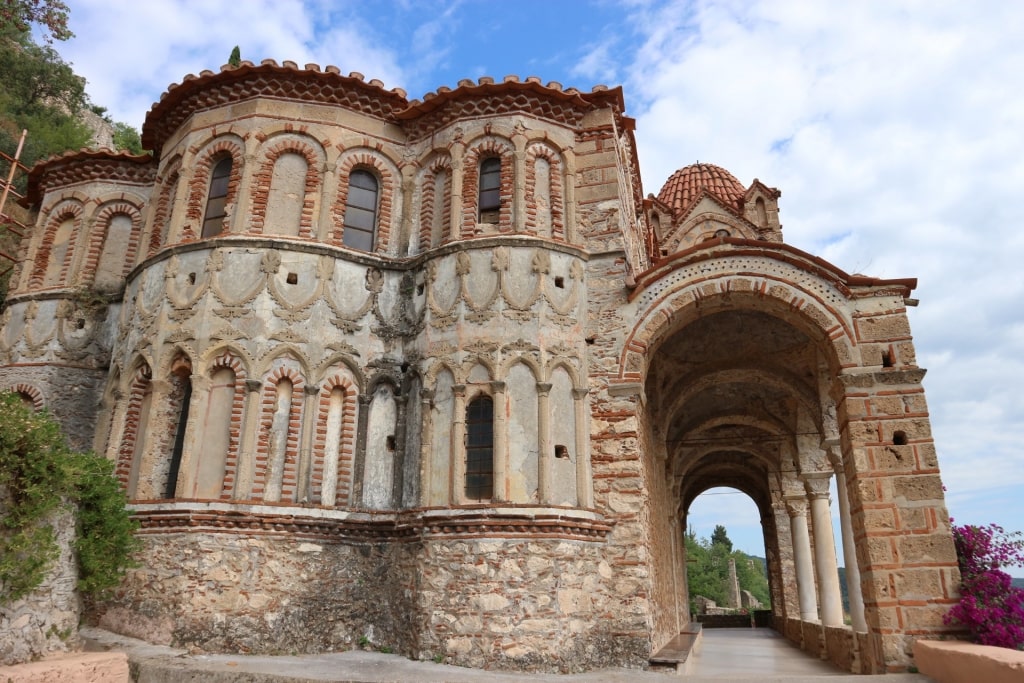
Agios Demetrios in Mystras, Peloponnese
Built in the mid-13th century, the town’s walls include some incredibly well-preserved medieval churches, including Agios Demetrios, where the last Byzantine emperor Konstantinos Paleologos was crowned, and the 14th-century Convent of Pantanassa.
Now a UNESCO World Heritage site, Mystras needs a half-day trip to fully do it justice. Ancient Sparta and the associated modern town of Sparti—home to the legendary fighting force—are just a short drive away, and are also worth visiting while here.
Read: Unforgettable Day Trips From Athens
Heptapyrgion of Thessalonica, Thessaloniki
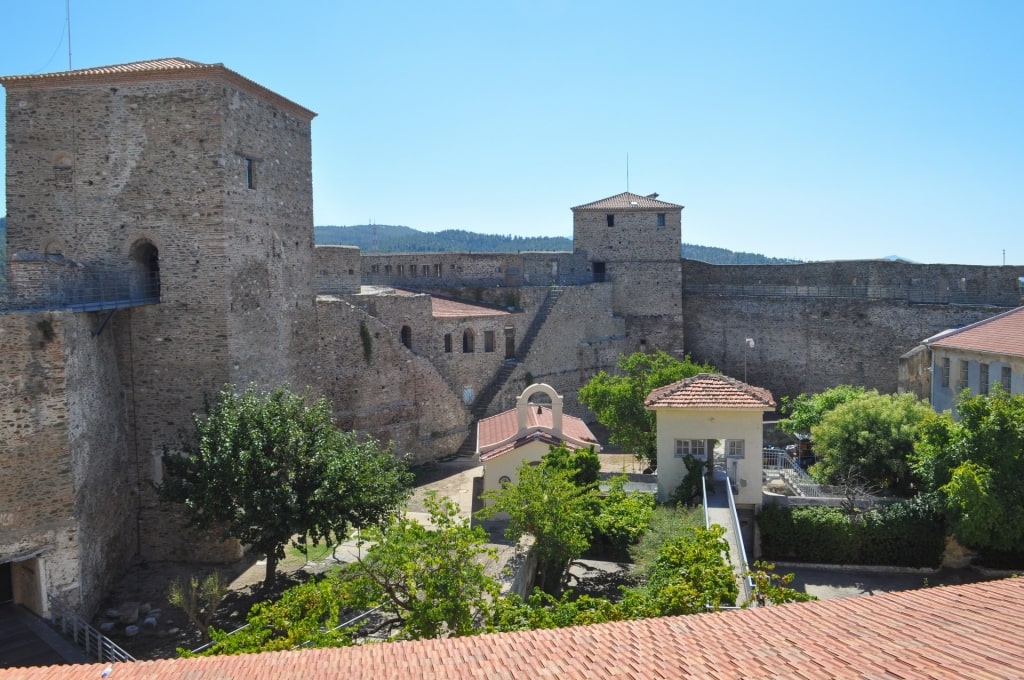
Heptapyrgion of Thessalonica, Thessaloniki
Set on the northeastern corner of Thessaloniki’s elevated Acropolis, the Heptapyrgion has towered over Ano Poli (the city’s upper town) for more than 1,000 years.
In all that time, no one seems to have come up with a rational explanation for why the name translates as “seven towers” when the structure actually has 10.
Its impressive walls, battlements and ramparts hide many dark secrets thanks to the castle becoming a 19th-century prison following the end of Ottoman rule. It’s alleged that the conditions were harsh, torture rife, and executions plentiful. Today, those tales are told on free tours around the buildings.
Byzantine Tower of Galatista, Halkidiki
A 40-minute drive east of Thessaloniki lies the small town of Galatista, largely unremarkable save for this impressive tower, little of which is known.
Thought to have been built in the Byzantine era, the tower was once surrounded by tall firs and lay next to a stream so powerful it could turn two nearby watermills.
With so little on record about the tower itself, popular myth has begun to fill in the gaps in its history, with some claiming it was the home of the nymph queen Galateia, who then went on to lend her name to the town itself.
Agios Nikolaos Fortress, Rhodes
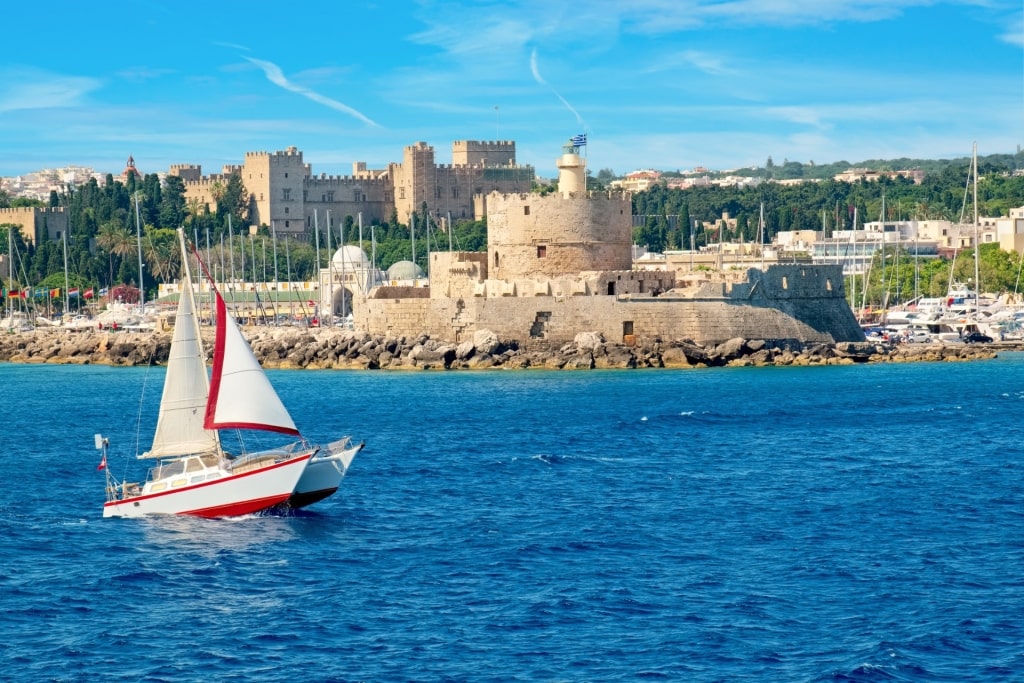
Agios Nikolaos Fortress, Rhodes
Next to the site where the Colossus of Rhodes (one of the Seven Wonders of the Ancient World) is said to have stood sits this 15th-century castle, guarding the approach to the town’s former military harbor, Mandraki.
Built by Piero Raimondo Zacosta, the then Grand Master of the Knights of St. John, to guard against Ottoman invasion, the fortress is now a lighthouse, with one of the lamps dating from the 17th century thought to be one of the oldest in the Mediterranean.
The pier on which the fort sits is also home to three associated windmills dating from the same era.
Tower of Fokea, Halkidiki
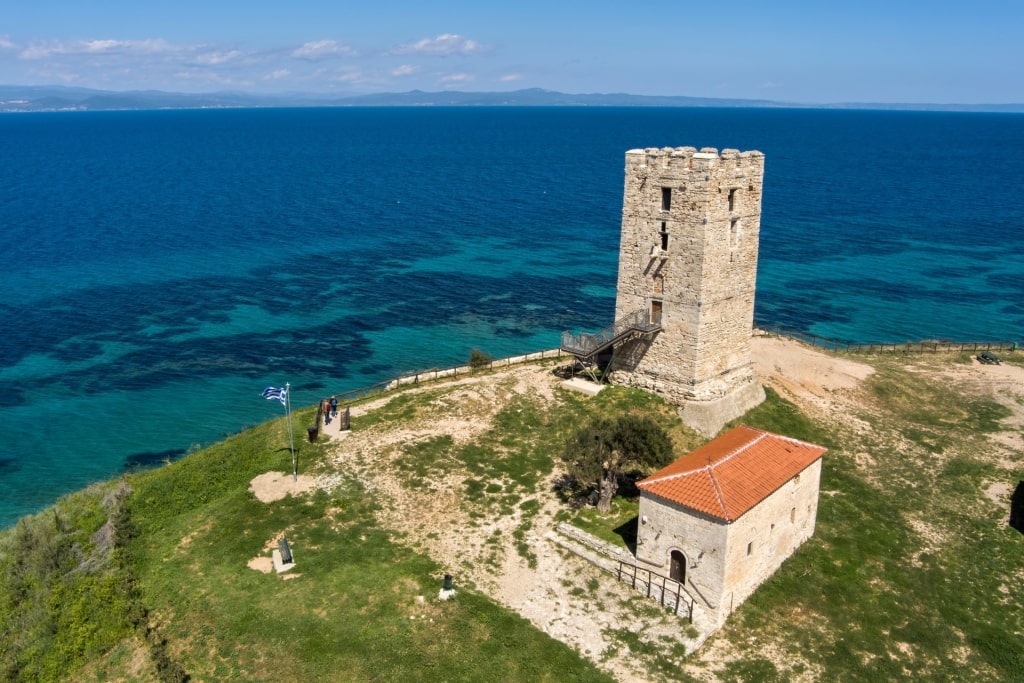
Tower of Fokea, Halkidiki
Kassandra, the first “leg” of the three-pronged Halkidiki peninsula, is known for its great beaches, providing a respite from the heat of summer for both visitors and locals from Thessaloniki, around an hour’s drive away.
While mainly developed for vacationers, some history does remain, a prime example being this 90-foot-tall stone tower overlooking the port of Nea Fokea.
Built as part of a monastery in the early 15th century, it is one of Halkidiki’s best-preserved Byzantine structures and is historically significant as it provided the headquarters for Emmanouil Papas, who led the local revolution in the 1821 Greek War of Independence.
Castle of Favieros, Peloponnese
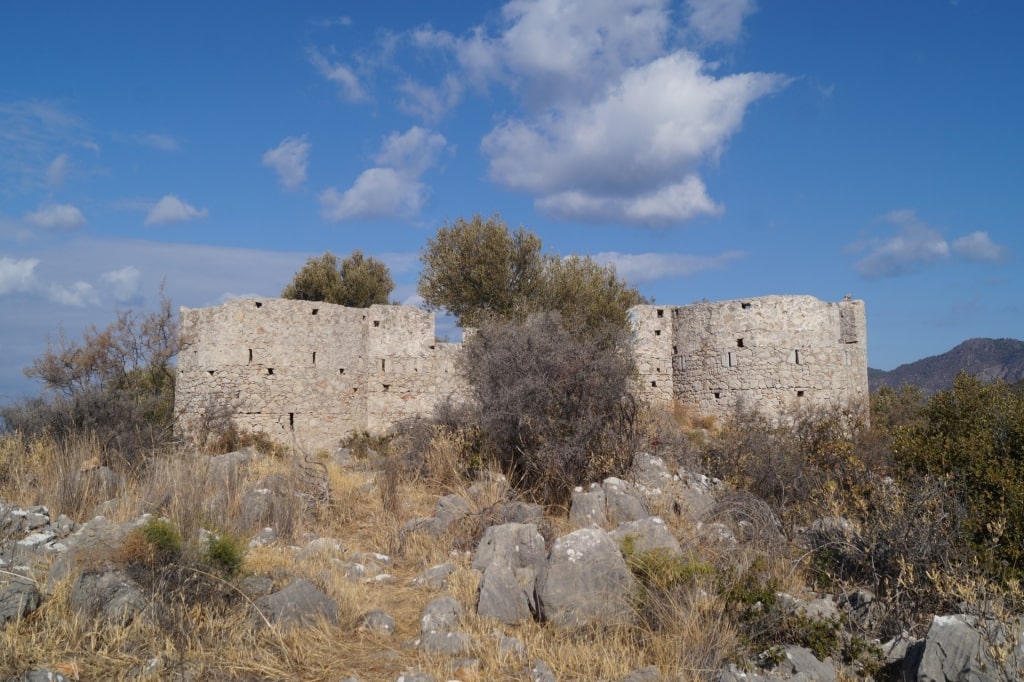
Castle of Favieros, Peloponnese Photo by Schuppi on Wikimedia Commons, licensed under CC BY-SA 4.0
Methana is an inverted teardrop-shaped volcanic peninsula overlooking the Gulf of Epidavros on the northeast coast of the Peloponnese, an hour’s drive from the town of Nafplio.
At the head of the narrow strip of land that connects Methana to the mainland lies this 19th-century stone castle, built in 1826 by Charles Nicolas Fabvier, a French nobleman who was responsible for helping form the tactical unit of the Greek Army following the 1821 War of Revolution.
With much of it ruined today, the most impressive aspect of the castle is the 60-foot-long façade to the southeast, which remains protected by two cylindrical towers at either end. While much of the castle is overgrown, it can be visited at any time and has great views over the islands of Agistri and Aegina.
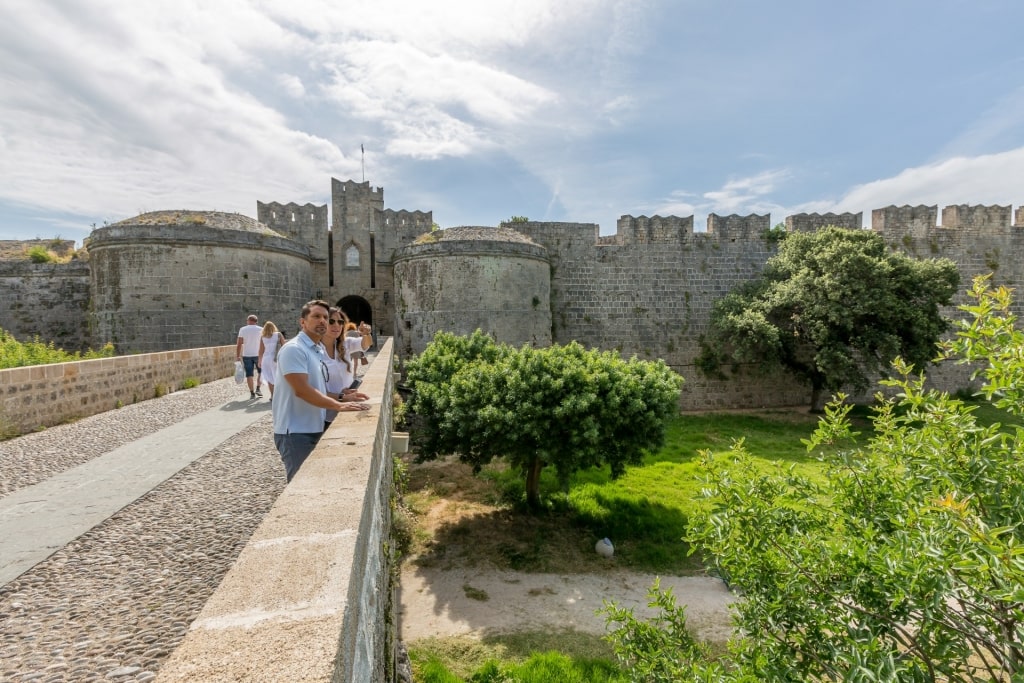
Palace of the Grand Master, Rhodes
Are you intrigued by the turbulent history of Greece and the many castles that are its legacy? Browse Celebrity’s cruises to Greece to explore its castles and other famous Greek landmarks.
